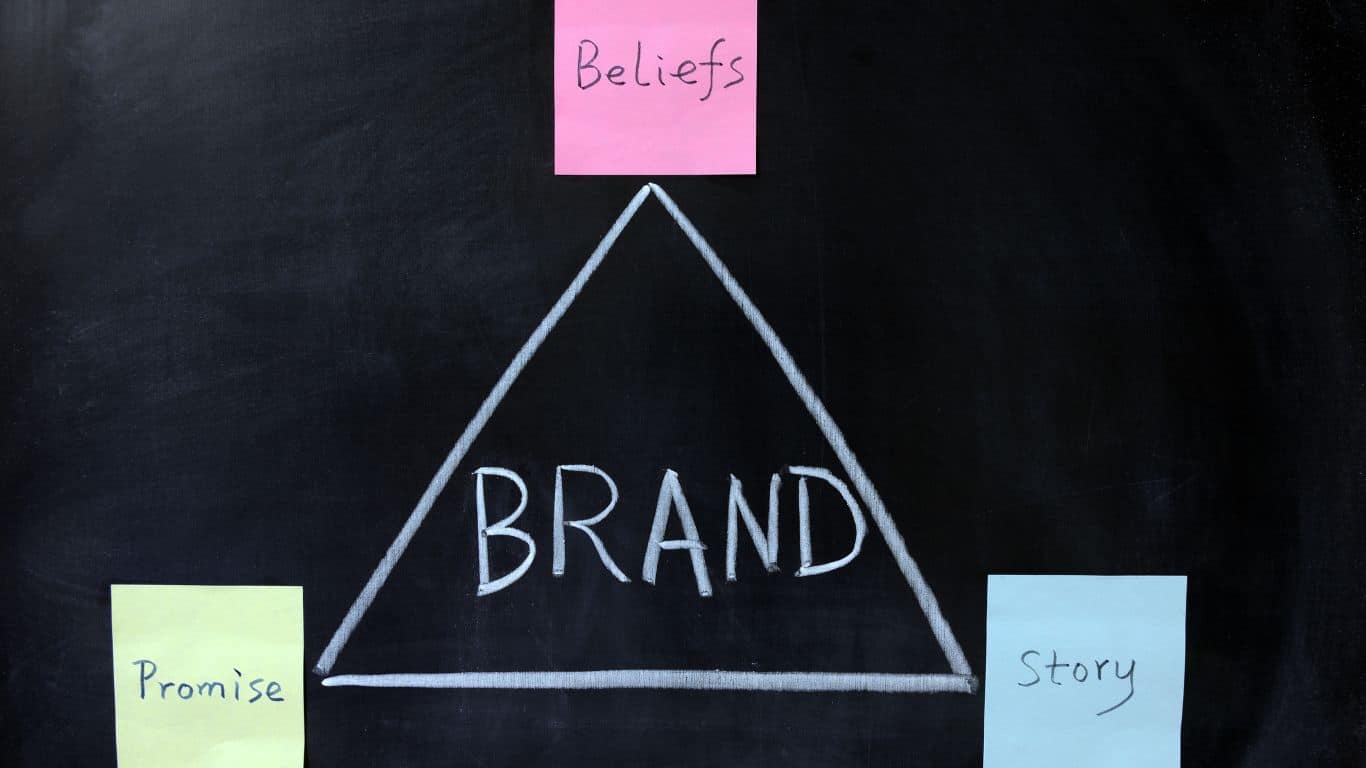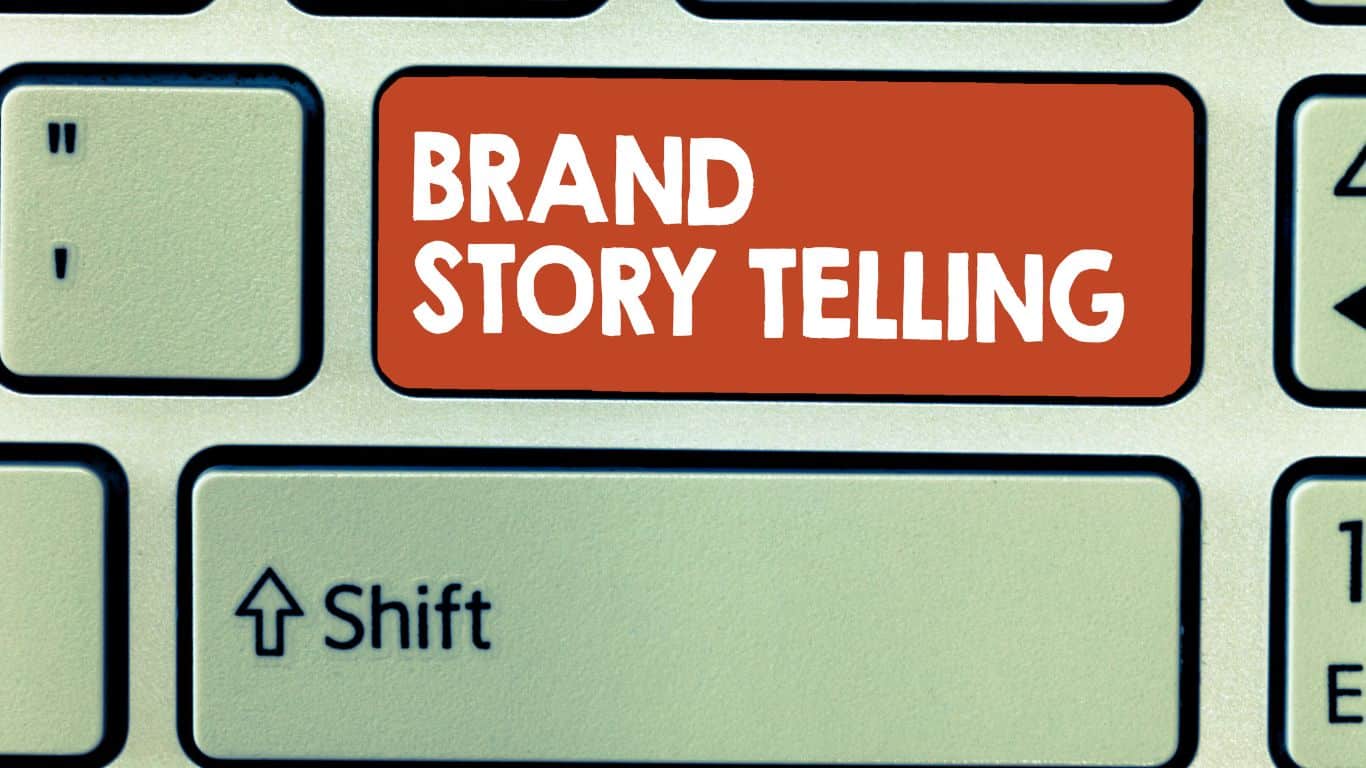The 10 Commandments of Telling Your Brand Story
In a world of fierce competition, we cannot overstate the power of your organization’s values, history, and personality in making sure your brand stands out. Yet, many businesses and organizations fail to realize the impact their brand story can have on building customer trust and driving sales. A brand story is a narrative that showcases what your business does, what it stands for, and what makes it exceptional. When told effectively, it creates a deep connection with customers and other key audiences. Like a gripping novella, a company story should be genuine and relatable, reflecting the journey that brought your business to where it is today. Ultimately, your company’s story is your customer’s story.
You may think you know your company, but when it comes to writing a gripping story, where do you begin? Let us guide you through everything you need to know about using your own story to nurture your brand’s reputation and build customer loyalty.
Table of Contents
What is a brand story?
Your brand story is more than just the words on your website or ads. It’s the emotional narrative that shows how your product or service enhances your customers’ lives. Beyond just a straight timeline, your brand story goes beyond words to encompass the emotions and experiences that shape how your customers perceive you.
Every aspect of your brand contributes to crafting this unique narrative, from the colors and design elements to the interactions with your staff.
Effective brand communication requires that you dig into the events that gave birth to your organization and understand how this story continues to drive your mission. Like memorable characters in books and movies, a compelling brand story will make a lasting impression on your audience, creating empathy and fostering genuine connection.
Why do you need a brand story?

In today’s digital world, personal connections drive consumer behavior. However, most of these connections are not created or nurtured face to face but in the digital realm. Building relationships and networking with brands is what consumers crave. That’s why an authentic brand story is absolutely essential. It’s the key to evoking emotions and establishing strong connections with your audience.
But it’s not just about standing out from competitors. Company storytelling is about becoming memorable and converting your audience into loyal customers. By fostering a community of engagement and humanizing your brand, you can create authentic connections that resonate on a personal level.
In a fast-paced, automated society, humanity is the new premium. The internet gives us convenience and instant gratification, but the human touch is becoming scarce and cherished. Businesses can’t afford to be faceless entities anymore. To survive, they must connect with audiences, tug at their heartstrings, and engage on a much deeper level.
Brand storytelling is the answer. It weaves together the facts and emotions that your brand evokes, creating a cohesive narrative. It goes beyond just selling products or services. It’s about sharing the story behind your brand, why it exists, and why it matters. And it should be consistently communicated across all channels. It’s what will skyrocket your business’s visibility, profitability, and impact.
If you’re not convinced that brand stories are a part of successful marketing campaigns, consider that storytelling can increase conversion rates by 30%.
Storytelling has a profound impact because it triggers a biological response in our brains. A well-crafted brand story captures attention, evokes emotions, and engages people across all mediums. Our brains physically react to a compelling story. Stories can elicit the release of cortisol (the stress chemical) or oxytocin (the feel-good chemical), leading to feelings of anxiety or happiness. Different mediums, like audio, video, and print, will affect your customers differently.
However, it’s not just about the visuals or the voice; the core story itself is crucial. When you tell a captivating brand story, people are naturally drawn in. Whether it’s the story of your business’s journey or how your product positively impacts lives, a unique brand story is one of the most effective ways to engage your audience and foster a relationship with your brand.
Brand Stories Create Trust
Building trust is essential for brand growth and return on investment in an increasingly skeptical consumer landscape. Your customer audience is the lifeblood of your business, so it’s crucial to craft an authentic brand story focused on their needs.
According to the Harvard Business Review, trust is a key indicator of customer dedication to a brand. However, establishing authenticity is not always straightforward. To truly connect with your audience, you must be genuine, transparent, and honest about your business’s background and motivations.
Your organization’s culture and beliefs attract people in the first place. Let storytelling be the vehicle that showcases your authenticity and resonates with consumers, driving trust and brand loyalty.
Use Your Story to Connect with Your Customers
Crafting a compelling story is the key to forging a meaningful connection with your customers. It’s not just about promoting your company; it’s about showing your customers that you understand and can relate to them.
Storytelling has a unique power to engage and build trust with your target customers. When your story resonates with them, you create a strong bond that can lead to sales.
Remember, customers don’t just want to buy a product – they want to be a part of your brand. They want to feel like they are investing in your mission and becoming a part of something bigger. Your clients are buying into your narrative and becoming vital to your story.
When customers feel a sense of ownership and connection to your story, they trust it wholeheartedly. They become an integral part of your brand narrative, both figuratively and literally.
Storytelling Is Central to Content Marketing
Storytelling can captivate your audience, forge powerful connections, and grow your business. Many brands go beyond direct promotional messages and dive into the world of storytelling marketing. This approach focuses on creating emotional and memorable experiences that resonate with your audience on a deeper level.
Unlike traditional content marketing, storytelling marketing taps into shared values and experiences instead of solely pushing products. By incorporating narrative and classic storytelling techniques, you can weave compelling stories that evoke emotional responses and engage your target audience.
So, how do you utilize storytelling in your content strategy? It’s more than just creating individual pieces. A storytelling content strategy holistically analyzes your brand story and message, ensuring a cohesive narrative across all content types.
Through case studies and customer testimonials, storytelling showcases the value your product or service brings. By leveraging this powerful tool, you can build strong relationships with prospects and clients, creating brand awareness and boosting your content marketing ROI.
When developing content, consider how each piece contributes to your brand story and connects emotionally with your audience. Your storytelling should have consistent messaging that aligns with your overall vision. Our copywriters at ITH can unleash the power of storytelling in your content strategy.
Stories Inspire Action
Research has shown that incorporating storytelling into marketing can increase consumer spending and charitable donations. People are more likely to make purchases or contribute to a cause when they are emotionally engaged through a captivating story.
We all know that emotions play a huge role in our decision-making process. That’s why incorporating storytelling into your brand strategy is crucial. It helps you connect with your audience on a deeper level and gain their trust. After all, we are more likely to buy from brands we know, like, and trust. The result? Better return on investment!
But here’s the secret: it’s not about promoting your products. It’s about making your customers the heroes of your story. People love seeing themselves as the main characters, making them more inclined to choose you over other brands that only focus on their self-promotion.
While the “what” and “how” may seem straightforward, the “why” is where most businesses struggle. It’s not just about making a profit. Your “why” is your purpose, your reason for being. While you know your brand’s story, ITH can guide you to utilizing that story to gain leads and drive sales.
10 Commandments of Brand Storytelling

Creative writing may not be your strong suit, so we’ve developed the ten commandments to help you tell your brand story in a way that will get your message across and bring you results:
#1 – Know thyself
The first step to a great brand story starts with the existential question of “know thyself.” It all starts by knowing your origin story and why your brand exists.
To ensure a strong strategy, it’s crucial to provide concise answers to critical questions like:
- ZWhat is our purpose and why did we embark on this journey?
- ZWhat value do we bring to the world?
- ZWhat sets us apart from other companies?
- ZHow does our product solve a problem?
- ZWho do we serve?
- ZWhich actions align with our core values?
Part of “know thyself” includes your brand’s mission. To develop a solid understanding of your mission, ask yourself:
What is the deeper value or impact of your products or services?
How does your brand manufacture products or provide services?
Why does your brand do what it does?
By answering these questions, you can create a narrative that reflects transparency and connects with your audience.
Aim for something that resonates with people when defining your brand’s purpose. Give them a reason to support and connect with your brand by showcasing the positive impact your brand has on others.
To bring your brand to life, give it a personality. Think about the traits that represent your brand and its people. Should it be casual or serious? Knowledgeable or ambitious? Familiar or helpful? The key is to convey authenticity and create a brand with which customers can truly connect.
Remember, your brand identity is a crucial part of growing your business. Consider how it influences your style, colors, brand name, and marketing efforts for a unified and impactful brand presence.
#2 – Know thy audience
Want to tell a captivating story? Start by defining your audience. One way to do this is by creating audience personas or archetypes, characters that embody your target customer’s key traits. Most organizations will likely have multiple target personas, for example, specifiers, users, and maintenance or training staff. Each persona will have their own needs and respect the effort you spend understanding their pain points and goals. Understanding your audience will give you a clear focus for your story.
Develop a customer persona for a more detailed understanding of your target customer. Archetypes and personas summarize user problems, goals, outlooks, and behaviors. However, personas provide specific details like name, age, gender, profession, education level, native language, and interests. You can gather this information through market research, statistical analysis, interviews, and surveys. Knowing your audience and how your product or business relates to them is crucial for telling your brand story.
Ask yourself
- ZWho is your target market?
- ZWhat do you know about their needs and pain points?
- ZHow does your product fulfill their needs and solve their pain points?
- ZHow does your product directly relate to your audience?
It would be best to have a solid understanding of your target market to ensure your brand’s values align with theirs. A good story will ensure your audience and company are on the same page.
#3 – Know thy product
Ultimately, telling your brand’s story is about selling yourself and your product. You can’t sell something you don’t understand! Once you answer “Why does my brand exist?” you must answer “What does my brand deliver?” Your products or services are an integral part of your brand story. Reflect on why you chose to sell them and how they have influenced your brand’s identity.
Start by asking some key questions
- ZHow do the quality and price of your products or services stack up?
- ZHow do your products make your customers feel?
- ZAre your products effective problem solvers?
- ZWhat sets your products or services apart from the competition?
It’s crucial to make your products relatable to your brand story. For instance, if you started your bar soap business at home using all-natural ingredients, people will expect your current products to reflect that sustainable ethos.
Make sure to establish the connection between your brand’s origins and its evolution to avoid any confusion. The aim is to showcase your product as an essential part of your brand’s narrative, not just a means to make money.
#4 – Thou shalt use emotion

Instead of focusing on the brand itself, brand storytelling centers on making an emotional connection with your customers. In a genuine brand story, the brand takes a backseat and allows the audience’s sentiments to take the spotlight.
Brand stories delve into the circumstances that evoke specific feelings in the audience. Skilled brand storytellers deeply understand the emotions and resulting actions that drive their audience. Only then can they truly empathize and tell a relatable story.
Focusing on emotions requires a shift in approach from conversions to connections. Brand leaders should explore and understand their audience’s motivations and the driving forces behind them.
While you may think you know all there is to know about your target market, you might be surprised when you do further investigation. Our ITH team are market research experts and will let you know if your strategy is on track.
#5 – Thou shalt not bear false witness about thy brand

When building your brand’s story, authenticity is key. By incorporating genuine authenticity, you can create a powerful brand narrative that forges lasting connections and positions your brand as an industry leader.
Harness the power of word-of-mouth and encourage your customers to share your story in their own words. Turn them into passionate brand ambassadors who spread the word about your brand. This will make your brand persona feel even more authentic. This is where our Social Media Marketing services come into play.
Establish authenticity and connect with your audience by sharing the story of your brand’s origins and evolution. Uncover the history and values that define your brand and create a sense of familiarity.
Infuse a personal touch into your brand story by showcasing your customers’ and employees’ voices and experiences. Through market research and interviews, capture their perspectives and create a narrative that resonates.
Create trust by positioning your brand as a leader in your industry by infusing authenticity, creativity, and a profound understanding of your customers in your brand story.
#6 – Let your customers’ light shineth
Unleash the power of your brand by putting your customer in the spotlight. While your marketing team may assume the founder is the central role, you want your customers to shine as the main character. Your brand becomes a canvas for their own personal stories, creating a deeper connection.
Let your customers share their own experiences. Prospective buyers want to know if current users are satisfied before committing. This applies to both B2C and B2B brands, but especially for B2B brands due to the significant cost and time investments involved. By incorporating quotes, case studies, and review sites into your marketing strategy, you can instill confidence in potential customers when they make a purchase decision.
Keep in mind that brand storytelling is not about endlessly promoting your brand or product. Instead, focus on showcasing real people’s experiences and demonstrating that you share their values.
Put your customer at the forefront and let their stories drive your brand’s success.
#7 – Blessed are the simple, for they shall inherit leads
Crafting an effective brand story requires simplicity and precision. Eliminate unnecessary details and include only elements that serve your brand’s purpose.
Your brand story should be easily understood and relatable, akin to an elevator pitch but even more concise. The main statement of your brand story should be direct and to the point. Expanding upon the story can occur across various platforms and touchpoints, but the overall narrative should still remain simple and impactful.
Remember, more does not always mean better when it comes to brand storytelling. Keep your narrative concise and clear, ensuring that you get straight to the point. Avoid overwhelming your audience with complicated language or vague explanations. Instead, clearly illustrate who you are as a brand, your motivations, and your goals.
To maintain clarity in your brand story, use simple language, steer clear of industry jargon, and provide specific examples that showcase the value your brand delivers. Our writers at ITH can assist you in creating a brand narrative that is easy to read for all types of customers while remaining captivating an effective.
#8 – Thou shalt embark on a journey
Crafting a compelling narrative begins with creating a hero’s journey. When telling your brand’s story, your customer is the hero, and it’s essential to develop them as a relatable character with motivations, feelings, challenges, and needs. By aligning the traits of your buyer personas with the hero, customers will see themselves in the story, creating a powerful connection.
Every hero requires a goal or journey. Ask yourself, “What does your character want?” The answer may vary in complexity depending on the situation. For instance, if your company sells PVC piping, the journey may involve understanding and effectively utilizing successful client projects. Although it may not initially sound exciting, with the right tone and energy, even this story can captivate readers.
Conflict is a crucial element in any engaging story. In the case of our example, the hero may face various conflicts in pursuit of their goal:
Bad experiences with previous vendors
Limited budget
Supply backorder
Internal miscommunication
Bad experiences with previous vendors
Limited budget
Supply backorder
Internal miscommunication
These real-life conflicts can be skillfully incorporated into the narrative, showcasing the hero’s journey through these challenges as they strive to achieve their critical objectives.
The conflict marks the beginning of the drama, and it’s the time to introduce elements that bring excitement and entertainment to the reader. Interactions with others causing conflicts can create suspense and intrigue. Depending on the tone desired, the story can be approached with seriousness or infused with humor.
Similar to any great book, the hero transforms as they experience challenges. Your hero should go through a similar evolution, feeling backed into a corner and experiencing frustrations or anger. As the hero progresses towards their goal, they should change throughout the story. This transformation and the development of other characters are crucial in making the story compelling. It showcases that the hero has learned, making their mission attainable.
The hero has completed their journey, overcoming challenges, conflicts, and drama. They have attained their desired outcome with the assistance of your brand and its products, services, and support. Instead of turning this into a commercial, seize the opportunity to highlight how your brand’s “why” aligns with their “how” for success. Emphasize how your brand plays a role in making the hero’s goals achievable. Again, if it’s been a while since your Sophomore English creative writing days, Invite Them Home will help you with this part!
#9 – They shall have no other brand before you
Great brand stories are key to rising above the competition. Your company’s brand is not just any story; it should show your brand personality. By visually communicating your unique qualities, you can attract clients and showcase why your business or its products/services are superior.
While competitors may copy your products or steal customers, they can never take away your brand’s story. The more captivating and distinct your brand’s story, the more likely you are to lead the market.
#10 – Thou shalt guide your customers on a path to purchase

Ultimately, a great brand story is part of your marketing campaign. You don’t just need to tell your brand story; you need to add a call to action. Don’t underestimate the power of a straightforward call-to-action button. It may seem obvious, but many websites overlook the “BUY NOW” button, making it surprisingly difficult for prospects to purchase.
Whether your customers want to buy, register, sign up, make an appointment, order, or call after reading your online content, you want to make it easy for them.
When designing your call to action, keep in mind that it should not compete with your primary path. Without a call to action, first-time website visitors who are not yet ready to buy may simply leave after perusing your content without taking next steps.
By offering a “baby step” for your prospects, you can develop relationships, establish authority, and convert them into customers more quickly. So, make it clear to your customers what direct action they should take to do business with you, while strategically incorporating calls to action to drive sales growth.
Brand story examples
If you need inspiration, look at some successful brand storytelling examples:
Mars, Incorporated
One strong brand story comes from Mars, Inc, the parent company of brands like Snickers, Skittles, and Iams pet food. They utilize an endearing narrative in conjunction with a visual timeline to invoke an emotional response of nostalgia with readers. Mentioning the “five generations” beginning with two men in a kitchen creating “beloved confections” conveys relatable, humble beginnings. Their story then progresses to highlight their brand values and vision for the future: to “help create and discover solutions for climate change”, “make scientific leaps in pet nutrition and behavior,” and “be a leader who discovers and drives solutions to challenges that impact the world.”
John Deere
Tractor manufacturer John Deere brings us another good brand story who’s story’s central character, not surprisingly, is John Deere himself. This story uses the hero’s journey and captures the audience’s attention with drama from the beginning, as his father was lost at sea when Deere was only 4 years old. The story makes sure to emphasize that “we’re determined to uphold our founder’s core values of integrity, quality, commitment, and innovation as we carry the legacy of John Deere leadership across our greater global communities,” assuring their company’s products will deliver the same quality they are known for through future generations.
iRobot
Don’t fret if your own brand doesn’t span centuries. Take a look at iRobot, the company behind Roomba vaccums. They lay out their history, beginning in 1990 with a couple of MIT grads, in an easy-to-read bullet-point format. iRobot keeps their brand story simple but their message is effective: they were trailblazers in their industry with no signs of slowing down.
Let’s tell your brand story together!
You have an authentic brand story to share with the world, and we’d love to be the first to hear it! Contact us today and let our Invite Them Home team turn a good story into a compelling one your target audience won’t be able to forget!
Yes, we can do this. Here are a few examples of using storytelling in product copy. Can you see how we seek to engage with an audience persona who wants the children in their care to grow and thrive?
Reap the Benefits of Early Childhood Gardening with Raised Garden Beds
And in case you think we are one-dimensional





